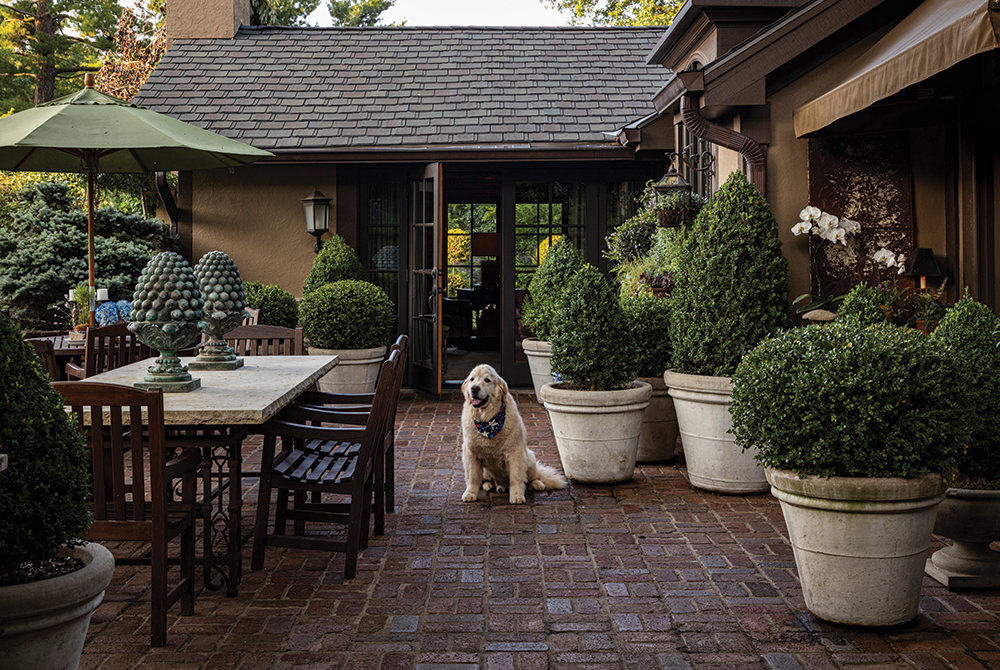
Cindy and Greg Barnhill have spent 30 years planting, sculpting, and tending their Old Leawood house and garden.
Today, the mature plantings look as if they’ve always been there.
Cindy, the owner of Pear Tree Design & Antiques in the Crestwood Shops, frequently uses European antiques and architectural elements both indoors and out. “My passion combines gardening and ornamentation, and I’m always moving things around,” she says.
Her terra-cotta rhubarb forcer might go from the family room to the garden and over-winter in the greenhouse. Large tians—earthenware casserole dishes in vibrant Provençal colors—could be used as planters outside or to serve salad indoors; she also mounds orchard apples or artichokes in the tians for display. Even old outdoor lanterns, “left for naught,” Barnhill says, can be repurposed with candles or planted with succulents. A French wire obelisk, now in the garden awaiting climbing clematis, could also go indoors as a sculptural element. A vintage ornamental iron architectural piece found in the south of France was transformed into a table with a stone top, now on the patio.
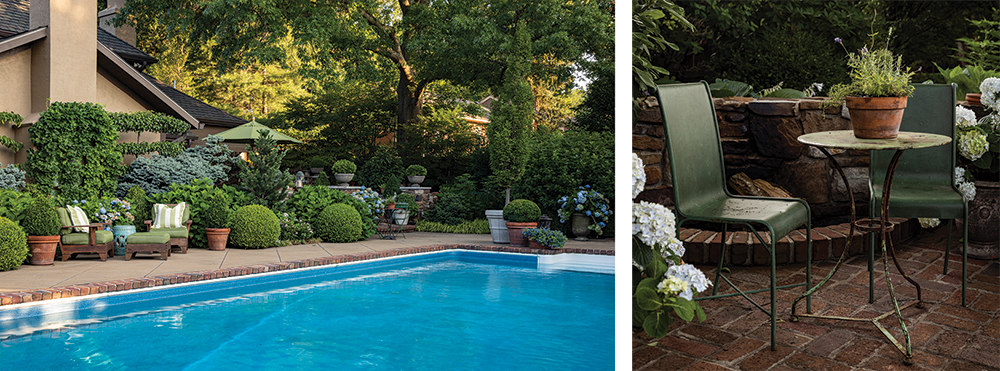
The couple has also been influenced by European garden design from luminaries such as Gertrude Jekyll, Vita Sackville-West, Rosemary Verey, and Penelope Hobhouse. “I comb through gardening books all the time,” Barnhill says. “When we started years ago, Brian Morley [now of Bergamot & Ivy] helped us lay out the beds. From time to time, we’ve had input from Kristopher Dabner [The Greensman] and Patrick Kappelmann [Arcadian Design]. And a lot of the maintenance is done by our landscaper Kevin Corbin.”
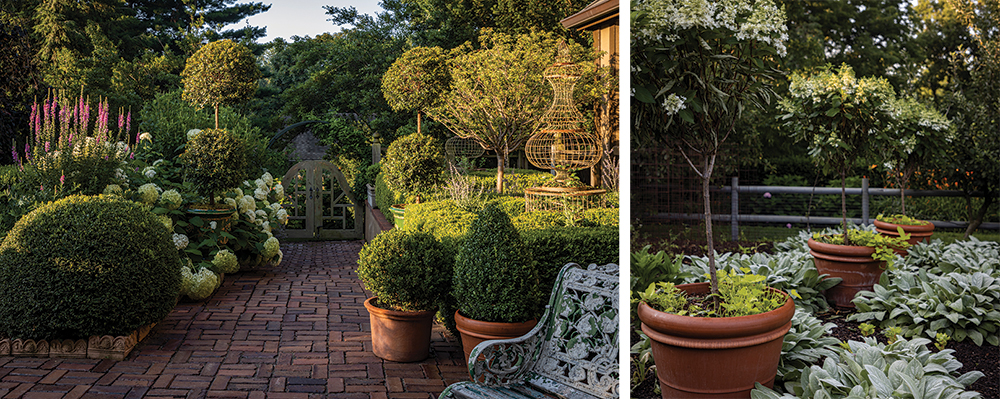
“I love structure in the garden,” she says, “so there is winter interest.” In this she echoes British expert Rosemary Verey who once said, “A garden in winter is the absolute test of the true gardener.”
In a succession of garden “rooms,” the Barnhills have created a container garden on the patio, an English garden of borders and berms surrounding the swimming pool, a French potager for herbs and vegetables, a French parterre, and an orchard.
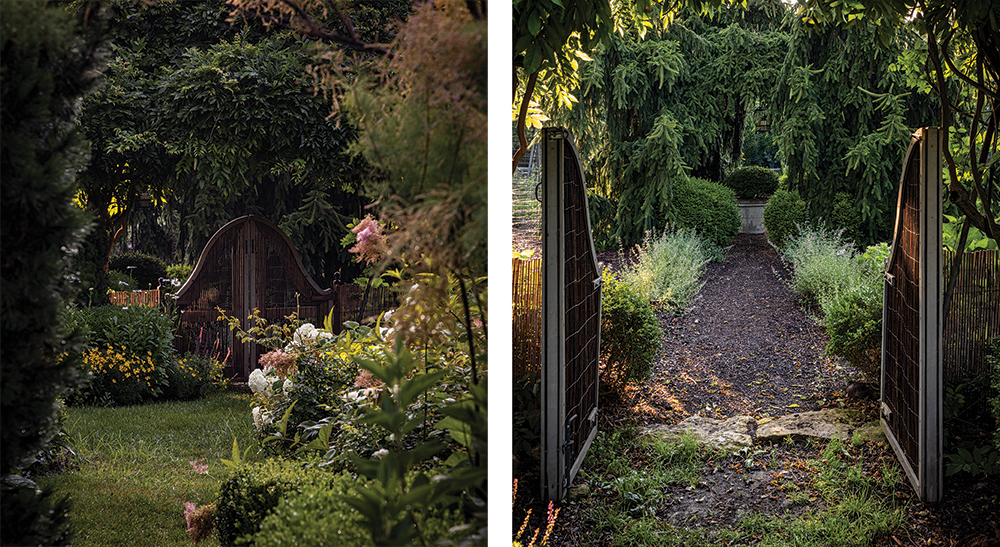
The Patio. “We live on this patio,” Barnhill says. Brick pavers lend an Old-World look to the patio. “I buy gates and iron pieces that can be turned into tables with limestone tops,” she says of the table. An assemblage of pots, gathered from travels, hold herbs and ivies, flowering plants, and succulents on a shelf made by antique corbels. “Odd is the way to go,” she says, laughing. No even numbers when arranging pots, and you have to be generous, she insists. Below the shelf is a planter she had made from three pieces of antique iron, now blooming with scabiosa, or pincushion flowers.
Borders and Berms. The doyenne of English gardening, Gertrude Jekyll, was a big fan of sculpting with large borders, which the Barnhills have created with conifers (blue spruce, bird’s nest spruce, white pine) and huge cement pots of Green Mountain boxwood in globe or spearhead shapes. They also mix in hydrangea, ivies, roses, and salvia.
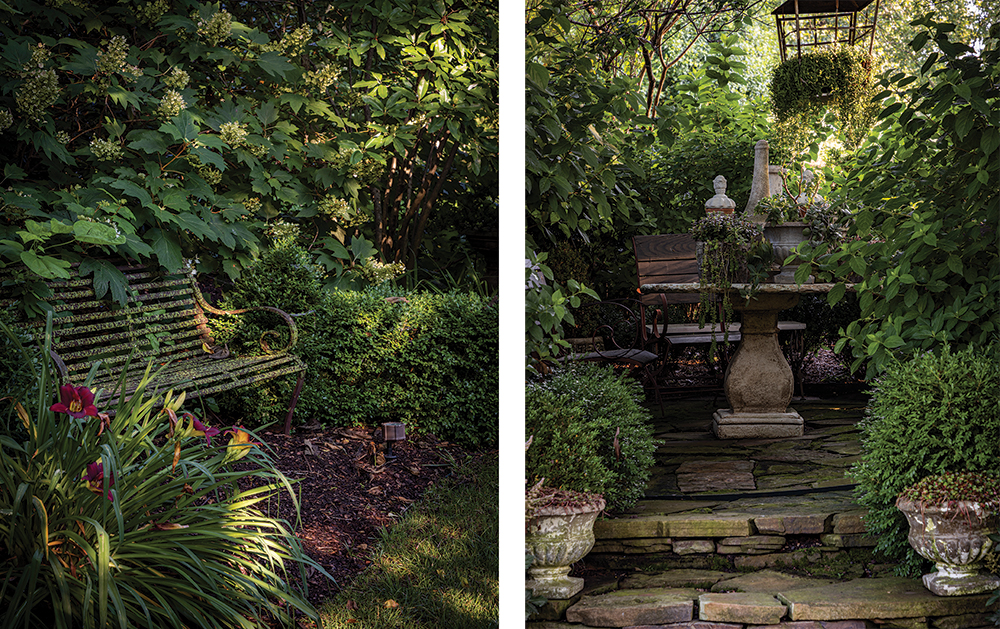
French Potager. A withy gate and fence overhung with wisteria provides the grand entrance to the potager, where the couple grows herbs and vegetables on a quarter acre plot. “We both grew up in the country and the most terrible two words for us are ‘crop failure,’” Cindy says with a laugh, “so we always grow too much.” There is nothing better, she says, than produce from their garden served in an antique bowl on the patio.
French Parterre. Based on the Elizabethan knot garden, the formal design is bordered with hardy boxwood. Cindy tried planting David Austin roses within the borders, but they got leggy from not enough sun. She has now switched to Russian sage, which does better.
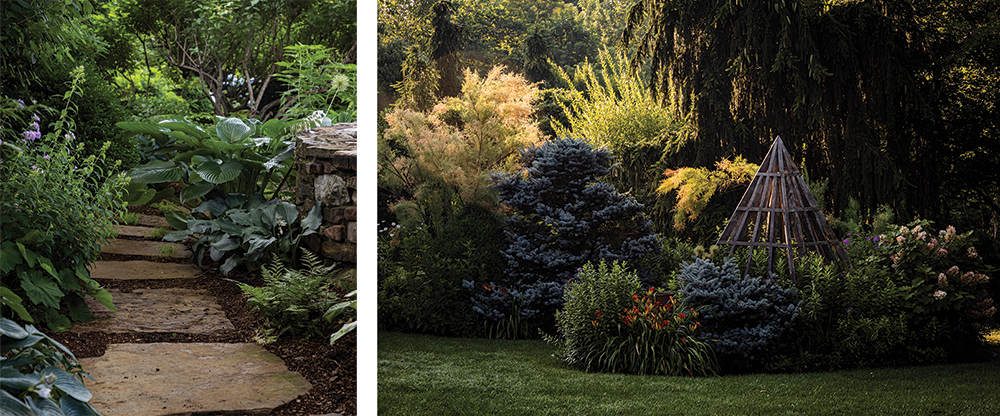
The Orchard. “We have a huge orchard, sort of unexpected for Leawood,” Barnhill says. “We have 16 pear and 88 apple trees. We just let the grass grow for a more natural look. I planted bulbs so that they would naturalize. Every spring we have a carpet of daffodils and wildflowers. I found the tall orchard ladder on a buying trip, a gift for my husband on our anniversary.”
“The garden is our therapy,” she says. “My husband is a surgeon, so the garden is a great change of pace for him. We come outside, slow down, and just enjoy.”


